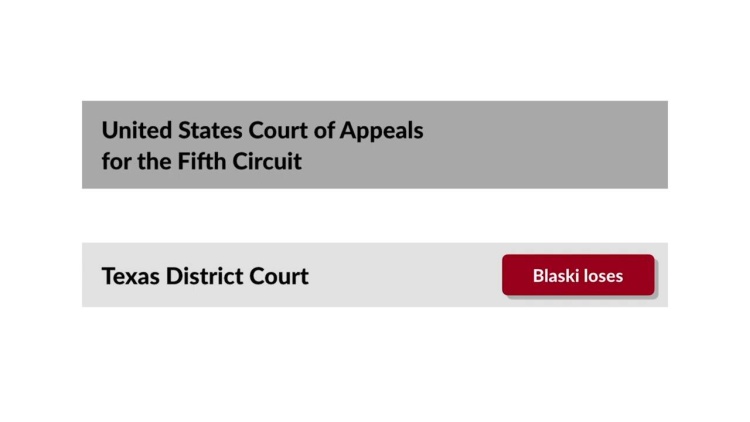Hoffman v. Blaski
United States Supreme Court
363 U.S. 335 (1960)

- Written by Sean Carroll, JD
Facts
Blaski (plaintiff) brought a patent infringement suit in the United States District Court for the Northern District of Texas (Texas District Court) against Howell and a Texas corporation (defendants). The defendants filed a motion under 28 U.S.C. § 1404(a) to transfer the suit to the United States District Court for the Northern District of Illinois (Illinois District Court). Section 1404(a) stated that a transfer may not be made unless it is for the convenience of the parties, in the interest of justice, and is a venue where the suit “might have been brought.” The Illinois District Court lacked original venue over the action, but the Texas District Court nonetheless granted the defendant’s motion to transfer because it was “in the interest of justice.” Blaski appealed, and the United States Court of Appeals for the Fifth Circuit affirmed the transfer. When Judge Hoffman of the Illinois District Court was assigned the case on transfer, Blaski filed a motion to remand the suit back to the Texas District Court. Hoffman denied the motion. Blaski then petitioned the United States Court of Appeals for the Seventh Circuit, seeking a writ of mandamus forcing Hoffman to reverse his ruling. The court granted Blaski’s writ and the defendants appealed.
Rule of Law
Issue
Holding and Reasoning (Whittaker, J.)
Dissent (Frankfurter, J.)
What to do next…
Here's why 899,000 law students have relied on our case briefs:
- Written by law professors and practitioners, not other law students. 47,000 briefs, keyed to 994 casebooks. Top-notch customer support.
- The right amount of information, includes the facts, issues, rule of law, holding and reasoning, and any concurrences and dissents.
- Access in your classes, works on your mobile and tablet. Massive library of related video lessons and high quality multiple-choice questions.
- Easy to use, uniform format for every case brief. Written in plain English, not in legalese. Our briefs summarize and simplify; they don’t just repeat the court’s language.







